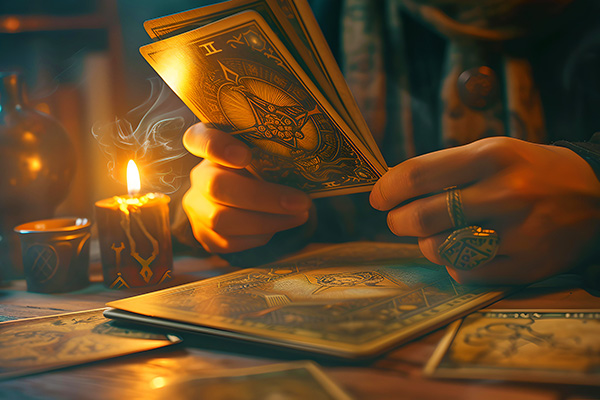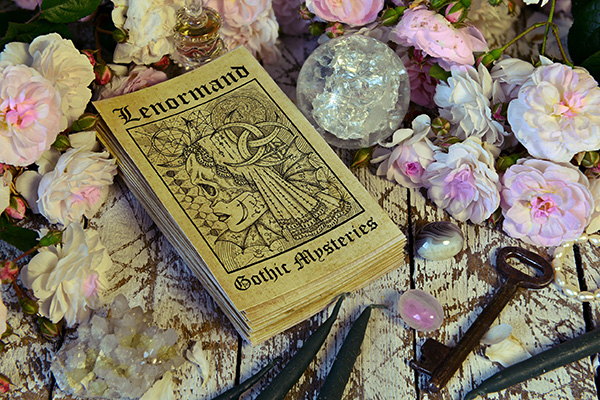tarot spread
A Psychic Reading Brings Order To Chaos
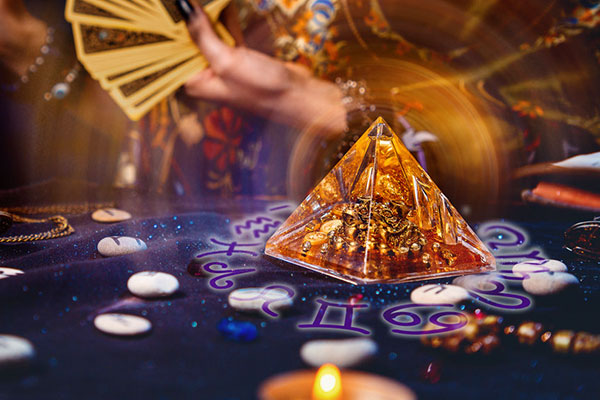 In a typical lifetime the sun will pass over us twenty-five thousand times. If you were to walk just one mile due west each and every day of your life (if such a journey by land were possible) your life would end at the place it began.
In a typical lifetime the sun will pass over us twenty-five thousand times. If you were to walk just one mile due west each and every day of your life (if such a journey by land were possible) your life would end at the place it began.
Just one mile every day, at a most comfortable stroll, you will have experienced more than anyone, and lived the dreams of most. Instead of merely waiting and watching the sun and time pass by.
If we walk slowly through life, but with purpose, we will see more, travel farther on less energy, and allow others more time to get out of our way. But occasionally, we will meet immovable objects in our path, and a decision on which way to turn must then be made.
Having a precise destiny in mind is challenging in itself, so making the right decisions along the way is essential to ensure our safe arrival at our intended destination.
In my own journey, I remind myself to smile demurely at those skeptical of what I do, even if their cynicism always surprises me, as we all foresee the future all the time.
For example, watching a carefree child at play, unaware in the midst of their joy of the likelihood, the inevitability of a fall sometimes becomes apparent and very clear to those with experience looking on.
The fact that some of us are able to see more, and in more detail, and further into the future, should therefore not be so impossible to conceive – as disconcerting or uncomfortable as this may be to the doubter.
The Multi-Layered Magic Of The Tarot
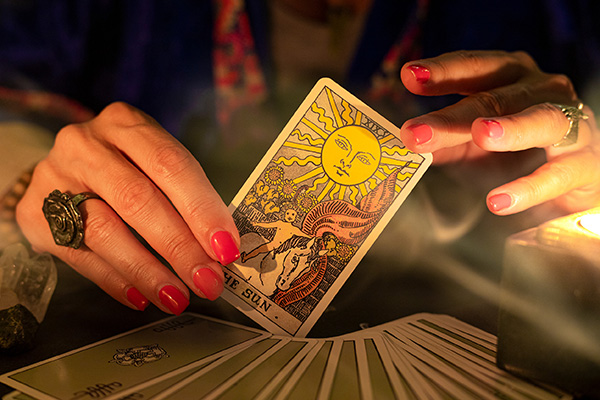 It’s no secret that the Tarot is my favorite divination tool. It is like a trusted assistant to me, always there to provide support and clarity, both in my professional work and in my own spiritual practice.
It’s no secret that the Tarot is my favorite divination tool. It is like a trusted assistant to me, always there to provide support and clarity, both in my professional work and in my own spiritual practice.
Do you know how sometimes you have a gut feeling about something, but you can’t quite put it your finger on it? Or how sometimes you have trouble remembering someone’s name, even though it’s on the tip of your tongue?
Well, that’s how the Tarot helps me when I read for people. It often helps me bridge everyday life with the esoteric and translate psychic messages in a more practical way.
The cards act as a metaphysical magnifying glass, sharpening my psychic impressions and intuitions into clear messages, guidance and predictions. Sometimes it is just a single symbolic element in a card that jumps out, demanding attention and holding the key to unlocking the essence of the message.
A single Tarot card can reveal a plethora of meanings and insights, each layer shaped by that particular reading. Tarot is deeply symbolic and fluid, allowing each card to be interpreted in myriad ways.
First, the context of the reading is important. Whether the question is about love, career, health, finances, or personal fulfillment, the meaning of a card can change significantly. For example, the Two of Cups could mean a romantic partnership in a relationship reading, but a harmonious business partnership in a career reading.
Second, the client’s state of mind and personal circumstances influence the interpretation of the card. Their experiences, desires, and fears color how the imagery and symbolism will be perceived by the psychic. The same Two of Cups might highlight existing trust issues for one person, while signifying a newfound connection for another.
The Timeless Appeal Of Tarot Divination
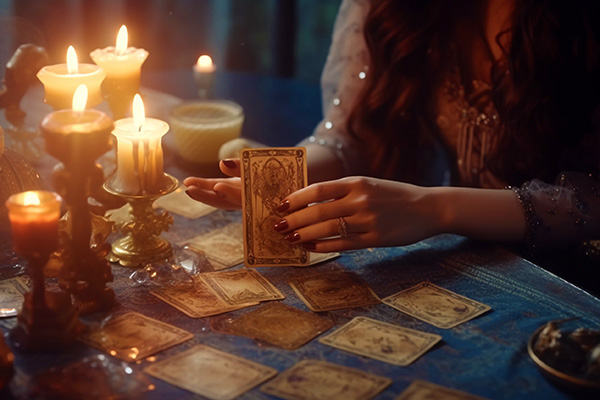 I have yet to meet a spiritually-minded person who does not like the Tarot, or at least is not a little intrigued by this famous deck of cards.
I have yet to meet a spiritually-minded person who does not like the Tarot, or at least is not a little intrigued by this famous deck of cards.
The Tarot is arguably the world’s most popular and widely used divination tool, renowned for its rich symbolism and the depth of insight it offers. As an esoteric tradition dating back centuries, the Tarot has evolved into a diverse, sophisticated system of divination used by people from all walks of life to explore the mysteries of the mind, spirit, and the future.
Unlike some other forms of divination that require specialized knowledge or tools, the Tarot is accessible to both beginners and seasoned practitioners, offering a unique blend of art, intuition, mysticism, and storytelling. Its versatility allows it to address a wide range of questions, from personal and spiritual dilemmas to broader societal issues, making it a go-to resource for those seeking guidance, clarity, and self-discovery in an ever-changing world.
Each of the 78 cards in a Tarot deck is loaded with symbolic imagery and archetypal meanings that can be interpreted on multiple levels, from the deeply psychological to the spiritual and mystical. This layered symbolism allows diviners to explore personal dilemmas, spiritual growth, and the mysteries of life.
Unlike other divination tools that may rely on more rigid systems, Tarot offers a fluid framework that adapts to the reader’s intuition, personal beliefs, and level of psychic ability, making it accessible to people of diverse backgrounds and spiritual practices.
The People In Your Tarot Court Cards
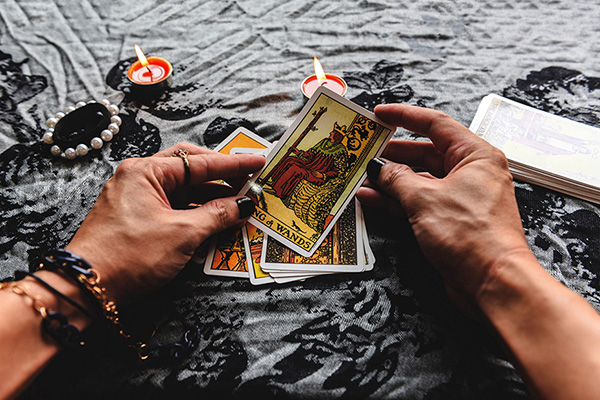 In a psychic tarot reading, several court cards, also known as ‘people cards’, may come up in a spread. This can be challenging and even confusing, because the reader must now interpret not only the situational influences and circumstances revealed by the spread, but also the other people who are playing a role, or may still be involved in the matter.
In a psychic tarot reading, several court cards, also known as ‘people cards’, may come up in a spread. This can be challenging and even confusing, because the reader must now interpret not only the situational influences and circumstances revealed by the spread, but also the other people who are playing a role, or may still be involved in the matter.
There are many different approaches to interpreting tarot court cards, but my personal preference is to associate each card with an astrological sign of the zodiac.
There are 78 cards in a traditional Tarot deck. The first 22 cards are the Major Arcana and the remaining 56 are the Minor Arcana. The Minor Arcana are divided into four suits that correspond to the four classical elements of Air, Fire, Water, and Earth.
The element of Air is typically represented in the deck design as swords, feathers, birds, or clouds. The element of Fire is usually represented as wands, batons, or staffs. The element of Water is represented by cups, chalices, bowls, or mermaids. And the element of Earth is represented as pentacles, coins, or stones.
Sixteen of the 56 minor arcana are the court cards. The court cards of each suit represent people who embody the personality, traits, or influence of the associated element. Occasionally, a court card may also represent someone who fits the physical appearance of a particular person card as depicted in the card’s design.

